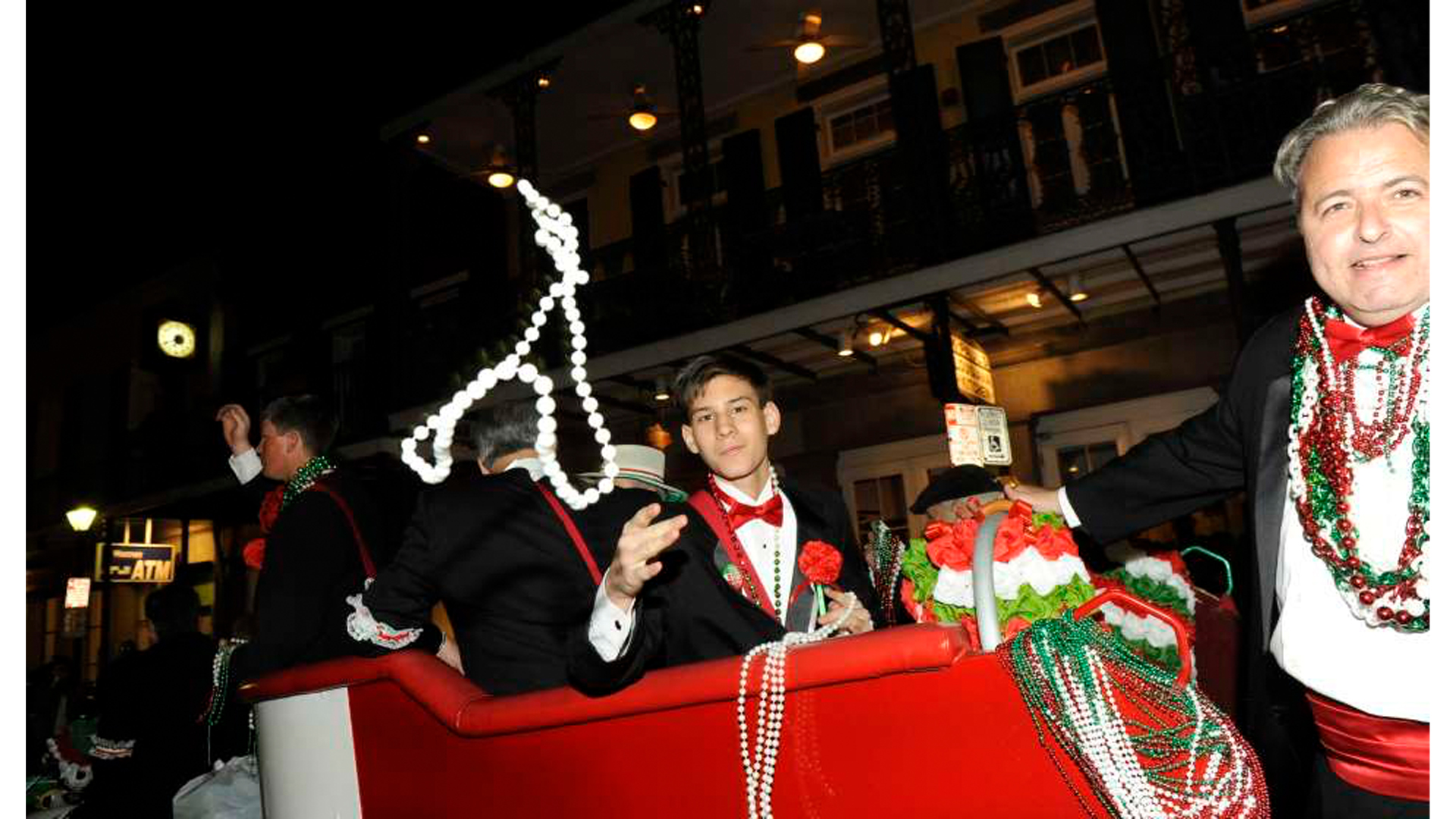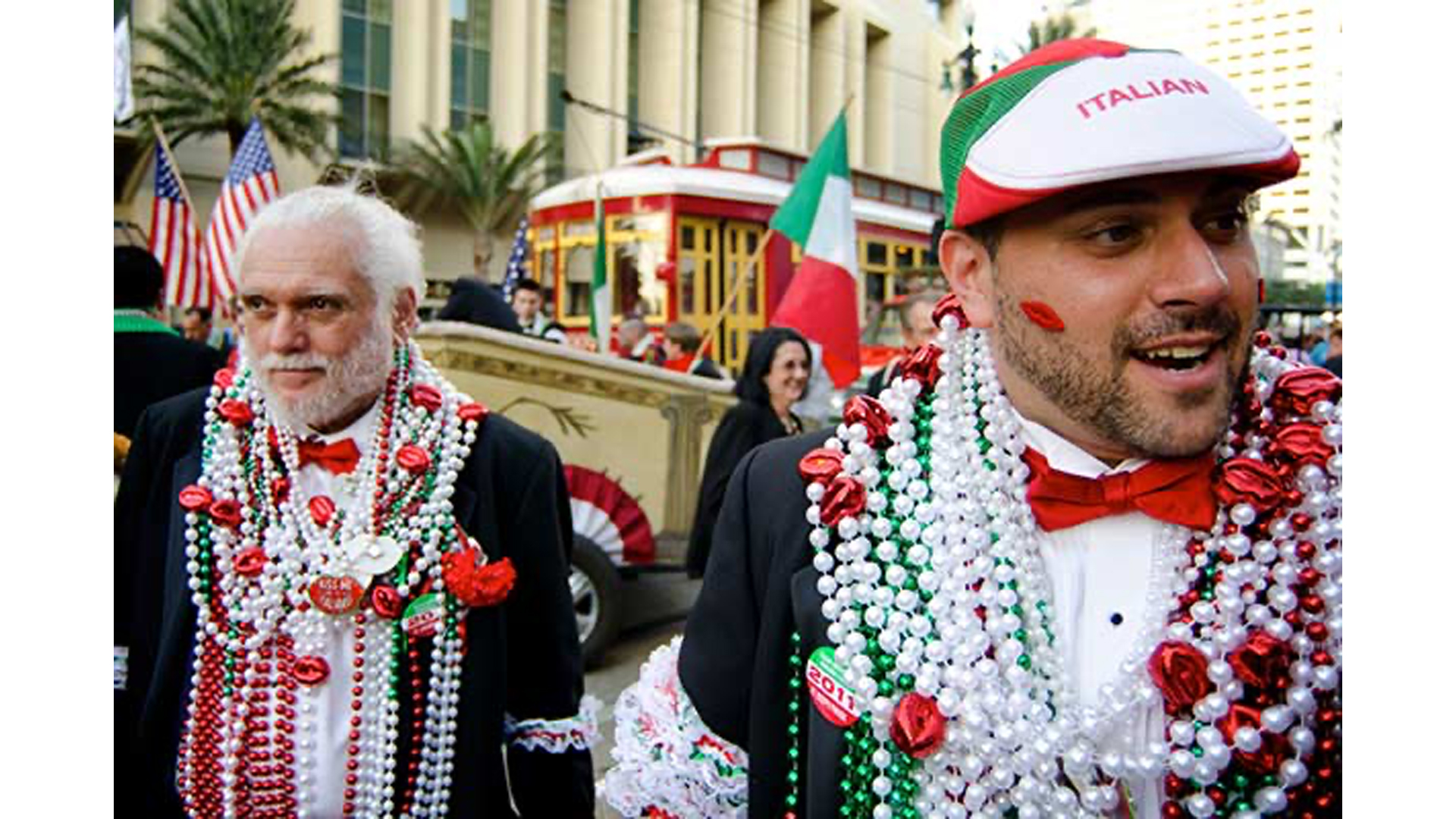Saint Joseph’s Day is celebrated across Italy with feasts and altars dedicated to the saint and sweet treats like zeppole and fried dough. The celebration in the United States is typically smaller, but one American city goes big. The St. Joseph parade is hosted on the weekend closest to the Saint’s feast day. In 2023, the pasta dinner will be held on Friday, March 24th and the parade and gala on Saturday, March 25th.
In New Orleans, the Saint Joseph Society hosts an annual parade, gala, and pasta dinner over two nights. The group dates back to 1970 and champions Italian American culture in the city, where Sicilians first arrived in the middle of the 19th Century settling in what has since become known as Little Palermo. The society is the largest ethnic organization for people of Italian or Sicilian heritage in the southeast United States.
America Domani spoke to Peter Gilberti, the club president of the Italian American St. Joseph Society of New Orleans, about how the organization celebrates. The following interview has been divided in two parts and edited for length and clarity.

(Photo Credit: St Joseph's Society via Facebook)
America Domani: How did the Italian American St. Joseph Society of New Orleans form in 1970?
Peter Gilberti: Two gentlemen, Joseph Cardenia, and "Jimmy" LaCava attended a parade on a Saturday in the Irish Channel. We have an area of the city known as the “Irish Channel” because it was populated by a lot of Irish immigrants. They attended a parade there, and at the very end of the parade, there was an old beat up pickup truck, and these guys were riding around throwing bananas.
Joseph and Jimmy went to their friend Tony Russo, who had a law degree and was a part time magistrate, and said we need to do something. This is how things culminated into the Italian American Marching Club.
They were car buffs. They got a group of 1960 Mustang Convertibles and developed a debutante system where girls from five up to twenty-five participated in the parade as maids. They wore long pretty white gowns and long white gloves, and they rode in the parade, and a queen was secretly selected from among them, pulling a name from a hat.
They would have high school bands playing in the parade. They might have had a couple of floats, but nobody actually rode on them. They were more decorative. They were mimicking Carnevale in Italy. And they had marchers: Guys clad in formal wear, black tuxedos.
With Mardi Gras being here, we have access to all kinds of costumes and beads. They had these big flower canes that were made locally of paper-mache flowers that were done on a wooden cane in the colors of green, white, and red flags. Not the Sicilian flag, but the Italian flag. These guys would hand out paper roses, and beads, and blessed fava beans for good luck, and hand them out to the parade patrons, and if you were a pretty girl you got a kiss on the cheek. The parade evolved from that.

(Photo Credit: New Orleans)
AD: How has it evolved?
PG: When I got involved in 1985, we were using floats. The legend of St. Joseph Day is that there was serious famine in Sicily and a drought and crops aren't growing, and they prayed to St. Joseph, and the promise in their prayers were that if rains came and things grew, they would hold this bountiful feast, every year, and then the Vatican granted March 19th as St. Joseph Day. And that's when they would celebrate.
We have a float that resembles an altar. It's in the sign of a cross. And there are little seats where the girls could sit. They would line each side of it. We decorated it similar to an altar. It doesn't have all the foods because it just isn't conducive to roll through a parade with thousands of people lining the streets. That's the first float.
The second float is the title float. It's two gondolas, and there are two columns, at the top in neon it says Italian American Marching Club.
We had those floats constructed. And then we get some other floats that we rent. Like I said, because of Mardi Gras, we have a handful of float builders, and that's what they do for a living.
That's our pinnacle celebration. We have 12 floats in the parade, all of which with these young women five to twenty-five. The floats replaced the convertibles. Then floats come after the guys marching, with myself and the 24 board members. We ride on chariots. They used to be pulled by mules, but that gets to be a little messy when you are going to have several hundred guys walking behind it. That was learned pretty quickly.
We use small ATV four wheelers to pull us now. We lead the second half of the parade. In between us are local bands and marching bands, and they play Italian American songs: Louis Prima, Frank Sinatra, Dean Martin. Then comes the guys clad in formal tuxedos carrying those canes of flowers and wearing however many beads, and a pocket full of blessed fava beans. They are broken up into legions. They all have a boutonniere that is either red, white or green. And we keep them separate by color.
We parade throughout the center of the French quarter. And then we head back to the Hilton Riverside Hotel which is on the Mississippi River at the foot of Poydras Street, and we have a gala there. That’s attended by at least 1,000 people.
I'll go up on stage and try to get as many of my board of director, and we used to have a 1950-something Honda pulling the chariot -- we would bring it up through the loading dock, but the Hotel won’t let us do that anymore because of insurance -- and we have a queen selected from the girls in the parade. We have a character dressed as Caesar in the Roman legion outfit. And he pays for that position, so like Mardi Gras, we have a king and queen.
He would get in that Chariot, and the band would play Che La Luna. And all the board members would fall in behind with the red, white, and green beads. And they would walk around the dance floor tossing beads. Then after that we do a debutante presentation of all the girls in the parade, and they are escorted by their sponsor which is usually their father or grandfather.

(Photo Credit: Experience New Orleans)
AD: Are there special foods served at the gala?
PG: It's not a formal dinner. We do have muffaletta on the table from Perrone and Sons. A local confectionary, Angelo Brocato's, donates Italian cookies. And there are bottles of wine.
Brocato's started in the French Quarter on Ursuline Street and if you go by the building where they were, it is still named in the tile at the entranceway on the sidewalk. All their recipes, Arthur and his wife Jolie, he's either third or fourth generation, he's baking the recipes his great grandfather brought over from Sicily. And the gelato and the cookies, spumoni, and the different cakes and pastries, and it was all what his family started. It’s all been going on for 100 years.
AD: Is it still common to bake bread into intricate shapes?
PG: I just went to one of our local grocers here and I ordered five or six cross breads, and Italian twisted bread in the shape of a cross, and five or six in the shape of a fish. It’s a hard bread, like cotton candy on the inside, but baked hard on the outside. And a lamb cake, for the sacrificial lamb, and a bible cake. These are for our altar float along with a couple of St. Joseph candles.
Before we start the parade, a local priest, Father Taormina, comes down and does a blessing of the altar. The altar float is always dedicated to someone who has passed. There are three slots where you can place 8x10 pictures of a loved one and usually it ends up with more than that. If those slots are filled, they just put them on frames that stand up and put them on the altar.
And after that's done we get the parade going where it needs to go.
Ian MacAllen
Ian MacAllen is America Domani's Senior Correspondent and the author of Red Sauce: How Italian Food Became American. He is a writer, editor, and graphic designer living in Brooklyn. Connect with him at IanMacAllen.com or on Twitter @IanMacAllen.

